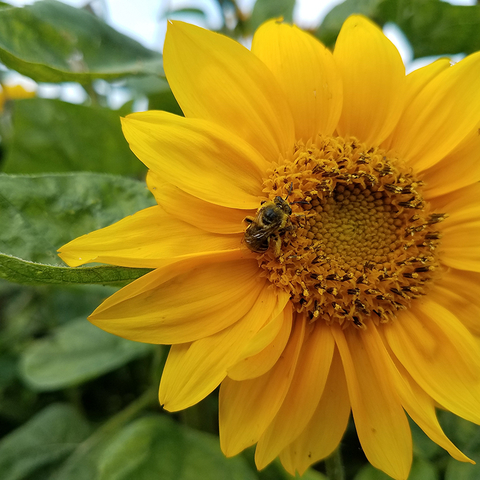With the early warmth and heavy rains this summer, you may have gaps in your vegetable garden for a few reasons. Maybe you’ve finished harvesting your early spring vegetables, or perhaps certain things didn’t germinate as well as you had hoped.
There’s still plenty of time to plant a wide variety of things.
Before you choose what to plant, look up the average first frost date for your area, and figure out how many days you have until a frost. Keep in mind that vegetables we consider “frost tolerant” may be tolerant to cold weather in the spring when they are small, but the parts of the vegetables we eat may be more sensitive to the cold during fall frosts.
Brassicas
Brassica crops (broccoli, kale, cabbage, collards, arugula, bok choy) really shine in the fall. Warm summer temperatures allow them to grow quickly, and cool fall nights encourage head formation for crops like broccoli and cabbage.
The cooler fall weather prevents these vegetables from bolting as easily as they do in spring and summer, and light frosts can enhance sugar production, making these crops sweeter in the fall.
While vegetables in this family can tolerate some frost, don’t push them too far behind your first frost date unless you are ready to shelter them with a row cover, cold frames, or other methods to extend the growing season.
Different varieties of these vegetables can have very different maturation times, so check the days to maturity before selecting a variety.
Spinach, chard, and lettuce
Leafy green vegetables are a great choice for late summer planting because even if they don’t fully mature, the young leaves can be harvested before a hard freeze.
Green beans and peas
Many green bean varieties only require 45-50 days to mature. However, they are very susceptible to frost.
Peas tend to take more like 50-60 days to mature and are more frost tolerant.
Carrots and beets
Similarly to brassicas, carrots and beets become sweeter with a light frost or two. However, they will not survive a hard freeze. Some varieties need closer to 75 days to mature, so stick to a faster-maturing variety.
Annual flowers
Certain annual flowers like calendula, borage, nigella, some varieties of cosmos and some sunflowers only require 60 days or so to reach maturity. These flowers are a great addition to gardens and can provide pollen and habitat to beneficial insects in the late fall when many of our summer flowers have stopped blooming.
Cover crops
If you’re done growing vegetables in part of your garden, consider planting a cover crop. Cover crops are plants that are not harvested, but rather added back into the soil to provide organic matter and other benefits. Check out the video below to learn more about planting and maintaining cover crops in gardens.


